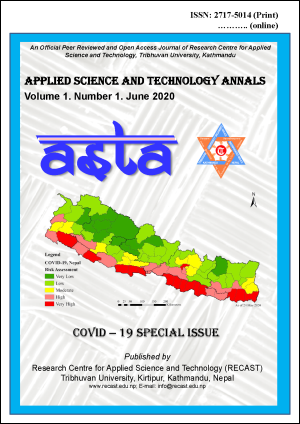Tracking and time series scenario of coronavirus: Nepal case
DOI:
https://doi.org/10.3126/asta.v1i1.30271Keywords:
COVID-19, international border, migrant workers, PCR, pathwayAbstract
The pandemic COVID-19 caused by novel coronavirus (SARS-CoV-2) is a highly infectious disease that has created an unprecedented global challenge affecting all the countries including Nepal. In Nepal, the first case of COVID-19 was reported on 24 January, 2020. The number of case increased to 1,798 by June 1, 2020. Most of these cases were recorded in the lowland Tarai districts of the country indicating that the major transmission slipped from the border between Nepal and India. Thousands of Nepali people go to India for work every year. This year, they returned en-masse to Nepal after India declared lockdown. However, the first case of COVID-19 was detected in a student who had returned from China and a few initial cases were from people who had returned from Europe via Middle East using international flights. As of June 1, 2020, the coronavirus has spread to 61 districts (out of 77) of Nepal as those home returning people, mostly the migrant workers made their destinations by roads using public vehicles. Reports are mounting that the infected cases are increasing in the rural mountains gradually. This study aims to prepare time series tracking map of the infection in Nepal. It is based on a total of 71,903 PCR tests that were conducted till June 1, 2020. There is a strong correlation between PCR tests and the identified case; however, the number of tests is much limited to develop a decision support scenario.
Downloads
Downloads
Published
How to Cite
Issue
Section
License
© Research Centre for Applied Science and Technology (RECAST)

